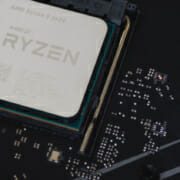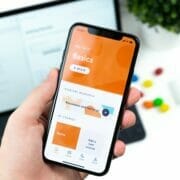Is Your App High Risk To Warrant A Minimum Viable Product (MVP)?
Deciding on whether to develop a minimum viable product or a full-fledged app can be difficult. As an appreneur, you’ll need to take a hard look at your project and determine whether an MVP is worthwhile. Below, we provide a few handy tips to help you make the right decision.
1. Determine Whether A Minimum Viable Product Is Right For You
In many cases, it’s usually smart to develop a minimum viable product instead of a full-fledged app. And this is often the way to go if you’re a startup that needs to stick to a budget and mitigate risk. However, it’s also likely that an MVP may not be right for you in specific cases.
If you’re developing something simple, such as a to-do list or note-taking app, then consider if an MVP is the sensible choice. After all, an app with such limited functionality and scope already fits within the confines of an MVP. But there’s a difference; an MVP can be scaled into a larger project at a later stage after testing the market.
2. Are Your App Ideas Truly High Risk?
You could position your startup as an innovator and trailblazer that makes unique apps. And if you’re indeed creating new and unique apps, then it’s likely that your risk is higher too. In that case, you’ll want to develop an MVP to test your app ideas and appeal to investors.
But if you’re not veering away from the well-trodden path and playing it safe, your app’s unlikely high risk. Furthermore, it will be harder to excite users with an app that’s not much different than existing alternatives.
3. Why You Should Implement Good App Design
A side benefit of developing an MVP is that it helps your team hone their app design skills. And a few areas that will improve include the following:
- Gaining a better understanding of the product and the resources required to complete it
- Accelerate the team’s understanding of the client’s needs and enhance iteration and delivery
- Significantly reduce time to market (TTM)
- Gain a competitive advantage over rivals entering the same market
However, developers need to understand what they’re trying to achieve with a minimum viable product. They’ll need to build a vertical slice encompassing emotional design, usability, reliability, and functionality. And never a horizontal slice across only one of these key elements.
4. How To Develop An MVP Successfully
As we mentioned earlier, an MVP is the sensible choice when embarking on a project that’s high risk. So, you’ll want to tackle it in a manner that leads to a successful outcome. Your minimum viable product should be a usable product, even with its minimal functionality. It should never end up as a demo, feel incomplete, or be meant only to gather feedback from users.
Furthermore, your team should be capable of using the right tools for making and releasing an MVP. They should implement analytics and a robust feedback pipeline for gaining insight into user engagement and responses.
5. Consider The Costs Of Developing An MVP
Depending on the size and complexity of your MVP, it can cost between $25,000 to $100,000. That’s a significant amount of money that could go towards your advertising and marketing endeavors instead. Therefore, it’s vital that you’ve done marketing research and determined what pain points you’re addressing before embarking on your MVP. Then, ensure that you build a community around your app and that you listen to user feedback.
Given the challenges and amount of work required to complete an MVP successfully, it’s best to work with a professional studio. Contact us today to learn how NS804 can help you develop an engaging MVP with brilliant app design.











Leave a Reply
Want to join the discussion?Feel free to contribute!